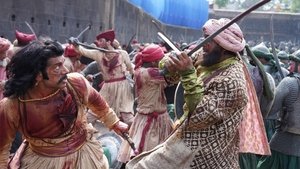
Video Sources 193 Views Report Error
Synopsis
The death of Chhatrapati Shivaji Maharaj in 1680 marked a turning point in Indian history, igniting the Maratha-Mughal conflict. His son, Sambhaji, took up the mantle of leadership, fiercely resisting the expansionist ambitions of Aurangzeb, the Mughal emperor. This period was marked by intense battles, political intrigue, and a relentless struggle for power that shaped the destiny of the Indian subcontinent.
Below, we explore the events following Shivaji’s death, Sambhaji’s leadership, and the challenges faced by both the Marathas and the Mughals in this historic conflict.
The Death of Shivaji: A Catalyst for Conflict
Chhatrapati Shivaji Maharaj, the founder of the Maratha Empire, was a visionary leader who established a strong and independent Maratha state. His death in 1680 left a power vacuum, creating an opportunity for the Mughal Empire, under Aurangzeb, to attempt to subjugate the Marathas.
Aurangzeb, driven by his ambition to expand Mughal dominance across India, saw the Marathas as a significant obstacle. The death of Shivaji provided him with a chance to weaken the Maratha Empire and bring it under Mughal control.
Sambhaji’s Rise to Power
After Shivaji’s death, his son Sambhaji ascended the throne. Despite facing internal dissent and challenges to his legitimacy, Sambhaji proved to be a capable and determined leader. He continued his father’s legacy of resisting Mughal domination, rallying the Maratha forces to defend their sovereignty.
Sambhaji’s leadership was marked by:
- Military campaigns against Mughal forces.
- Strategic alliances with regional powers to strengthen the Maratha position.
- Diplomatic efforts to counter Aurangzeb’s influence.
The Maratha-Mughal Conflict: Key Battles and Events
The conflict between the Marathas and the Mughals was characterized by a series of battles and strategic maneuvers. Key events include:
1. The Siege of Raigad (1689)
Aurangzeb’s forces launched a prolonged siege of Raigad, the Maratha capital. Despite fierce resistance, the fort eventually fell, leading to Sambhaji’s capture.
2. Sambhaji’s Execution (1689)
After his capture, Sambhaji was brutally executed by Aurangzeb, a move intended to demoralize the Marathas. However, it had the opposite effect, galvanizing the Maratha resistance.
3. The Maratha Revival
Under the leadership of Rajaram, Sambhaji’s brother, and later Tarabai, the Marathas adopted guerrilla warfare tactics, effectively countering Mughal forces and reclaiming lost territories.
Original title छावा
IMDb Rating 7.9 21,838 votes
TMDb Rating 7.1 14 votes
Director
Director
Cast
Chhatrapati Sambhaji Maharaj
Yesubai Bhonsale
Aurangzeb
Sarlashkar Hambirrao Mohite
Rajmata Soyarabai Bhosale
Yesaji Kank
Chandogamatya Kavi Kalash
Shehzada Akbar
Rayaji
Mujtaba





























